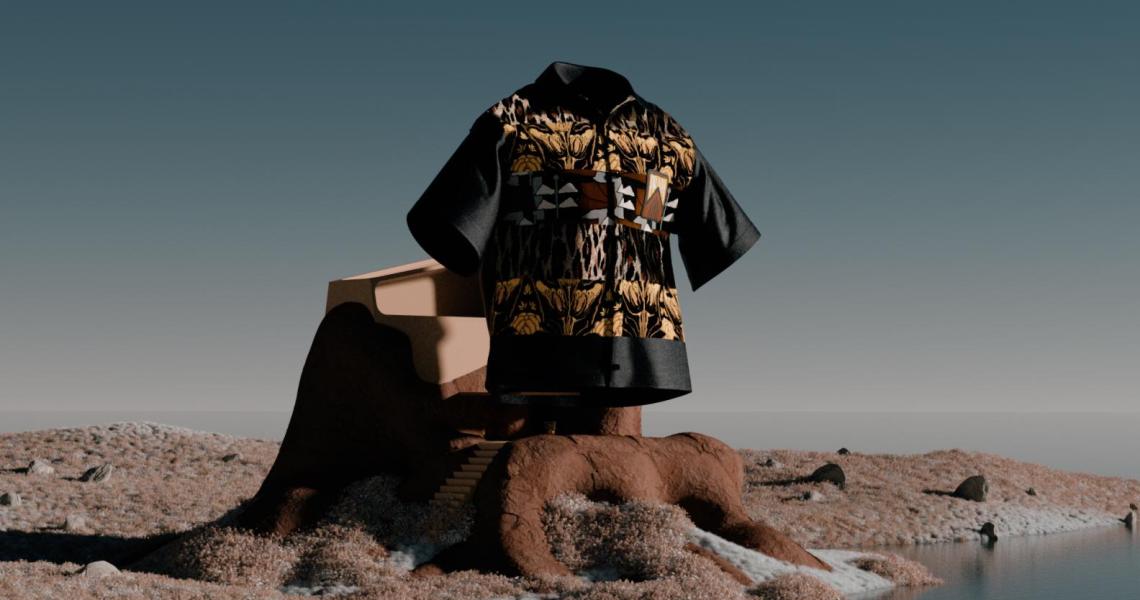Luxury brands are showing how thought-out approaches to NFTs, like selling phygital twin items, can be linked to more sustainable launches — like Prada, with its the Re-nylon collection. Others like Guerlain are pairing their NFTs with rewilding projects, allowing holders to support biodiversity.
Luxury brands have been building up their digital clothing inventories for the last year, as uses for digital clothing and NFTs has expanded. Now, as the get-rich-quick aspect of NFT’s is slowing down, engaging with customers through more in-depth NFT projects, like linking NFTs to sustainability, is becoming more of a priority for luxury brands. At the same time, it is increasingly more important for brands to create brand-aligned NFT strategies.
Late last week, Prada announced its second NFT collection, which will launch on July 7. Fifty physical pieces will be available for 24 hours and will be part of a limited run of upcycled archival Prada designs. The second edition brings to the forefront two priorities for Prada over the last couple of years: archival references and circularity efforts. The first run of Prada NFTs were offered for free with the purchase of a physical shirt for $1,300. One-hundred NFTs, designed with artist Cassius Hirst, were available. Both play into the brand’s “Timecapsule” initiative, which sells physical products and corresponding NFTs, or phygital twins.
“The Timecapsule is a monthly online event. For 24 hours, on the first Thursday of every month, an exclusive item [will be] made available on prada.com in very limited quantities, in select markets,” said a Prada spokesperson. Each limited-edition Timecapsule item is associated with a unique serial number and is delivered in custom packaging. “As such, there is a synergy between the Prada Timecapsule and the scarcity and desirability of NFTs,” said the brand’s spokesperson.
As the physical piece is not produced from new fabrics, it maintains the brand’s commitment to sustainability, following its Re-nylon launches starting in 2019 that only use reusable nylon fibers and its wider sustainability objectives. Prada Group has converted all the production of virgin nylon into regenerated nylon.
Currently, the first edition of Prada NFTs are re-selling for 2.56 eth to 9 eth, putting their value at $1,125 -$10,000. This shows that the differentiated approaches, from art to sustainability, are working in the resale market, as well.
James Sun, founder of premium trading platform Mint NFT, said that as he has spoken with many fashion houses, it’s become clear that luxury brands want to interweave NFTs and the metaverse into everything they do. “One of the things we look for is a forward-thinking fashion company, especially [in how they] relate their strategic launches to the metaverse and digital,” he said. “Not every fashion house is ready to integrate NFTs into everything they do today.” However, going forward, brands that want to make a dent in the changing market need to be thinking about what is at the center of their brand identity, he said.
Ad position: web_incontent_pos1
Other brands like Guerlain have also used this approach to develop their NFT launches. Nearly 2,000 ‘cryptobees’ — 1828, reflecting the year the brand was founded — were launched in March of this year. The launch was associated with a rewilding project centered on specific patches of land in the Vallée de la Millière nature reserve in France. The move appears to be part of a wider strategy to put sustainability at the heart of the brands’ identity. The brand did not respond to request for comment.




